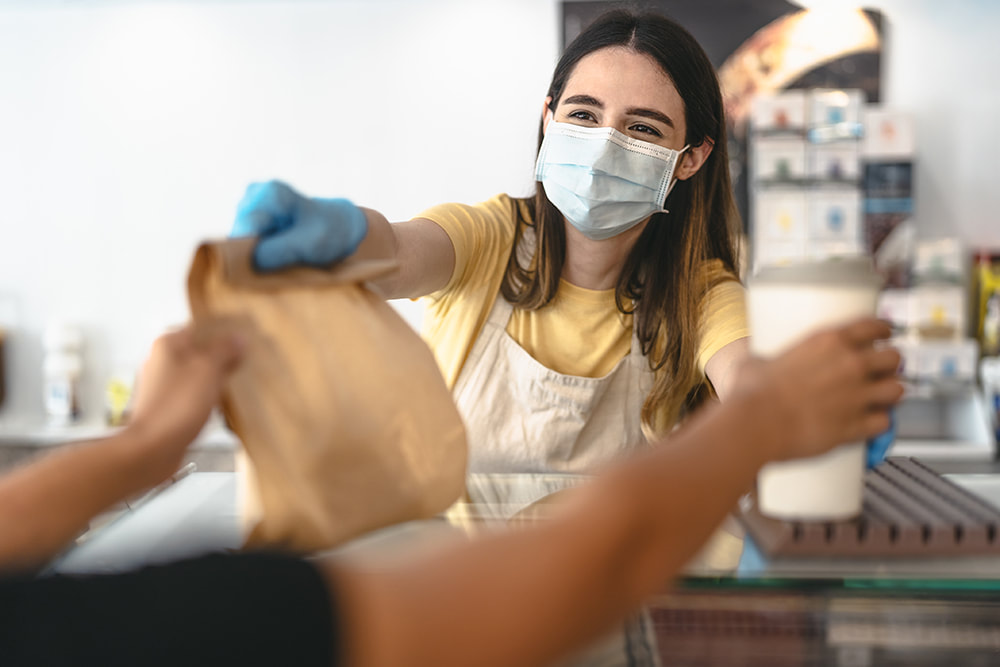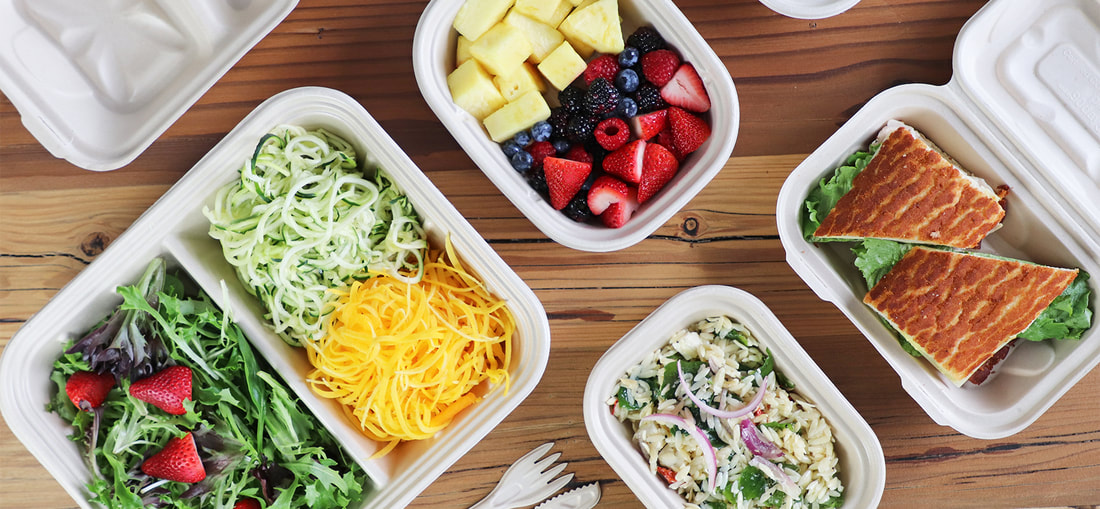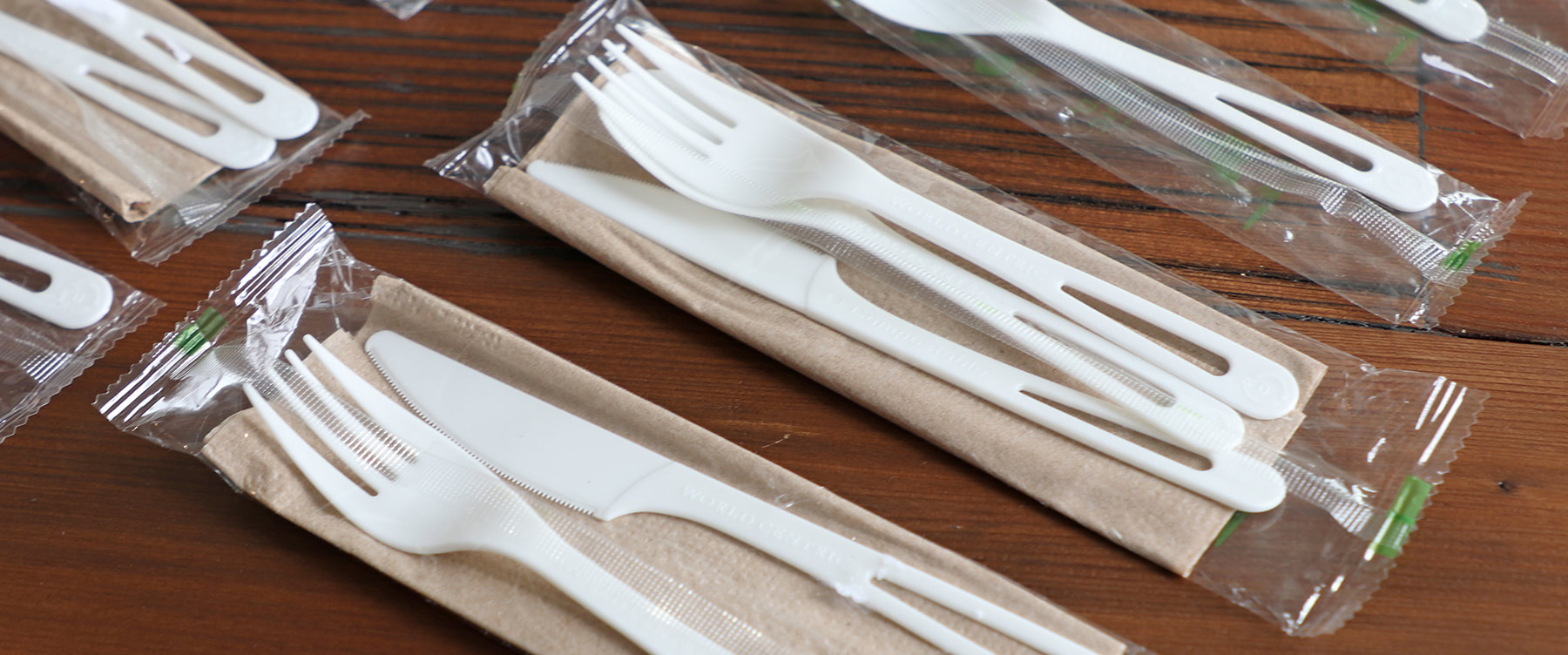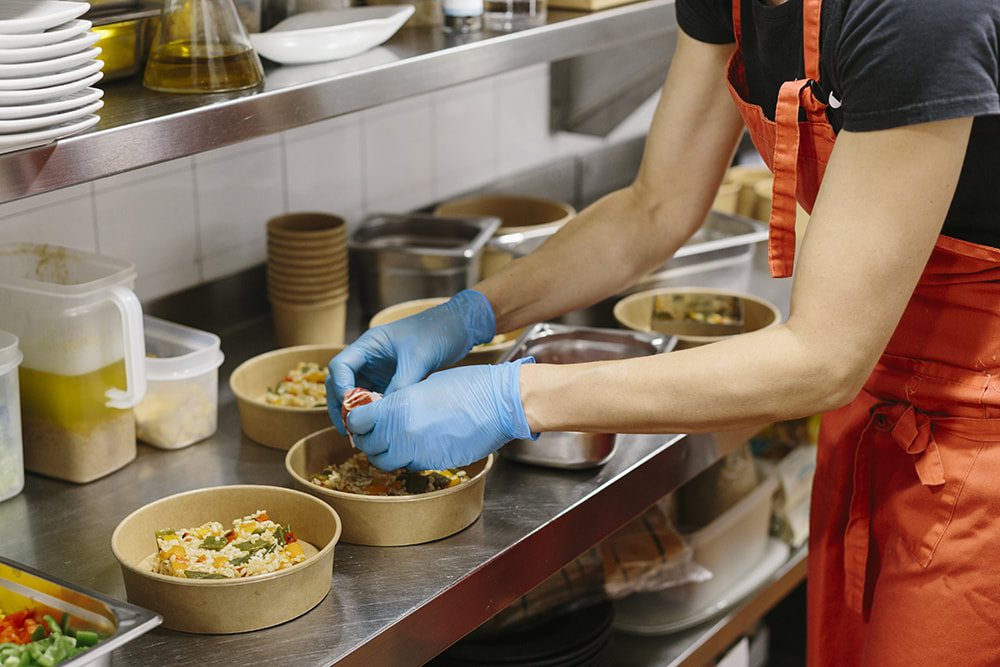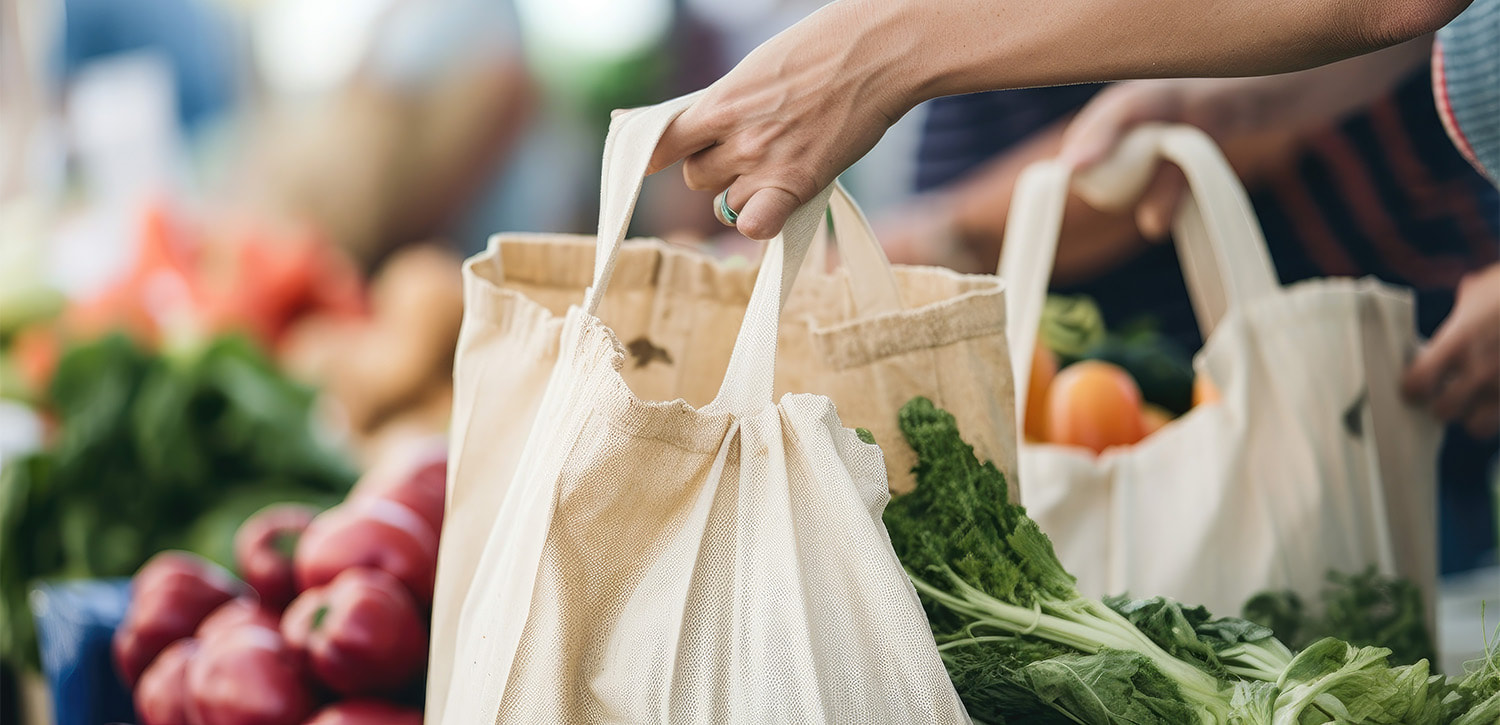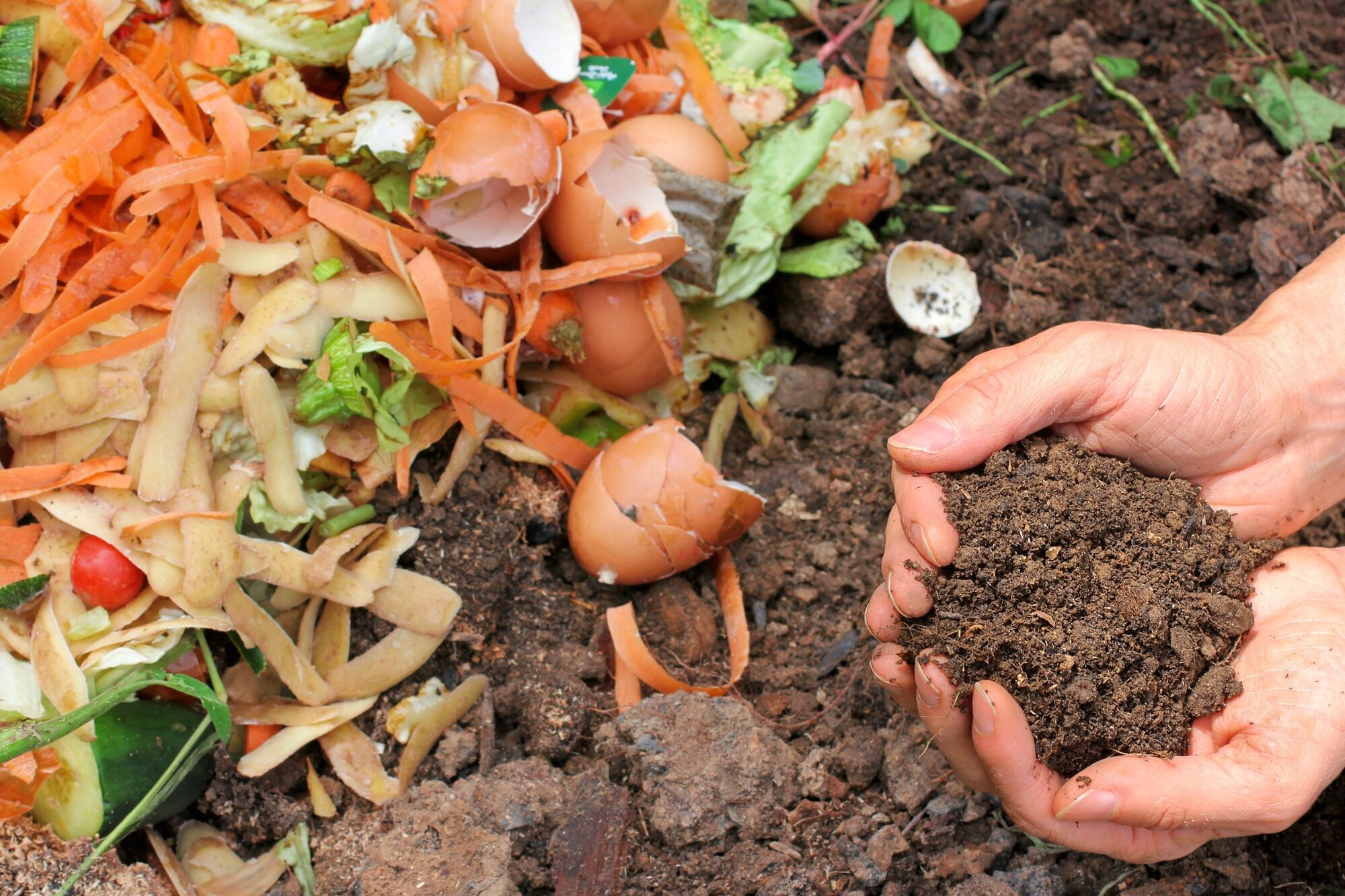World Centric Staff / 10 minute read
As demand for takeout remains high, concerns continue about the environmental toll of all the extra packaging waste that is being sent to the landfill.
|
Although demand for takeout has eased since the height of the pandemic, it is still higher today than before 2020 according to a Yelp study from 2022.
As customers become more educated on the buildup of waste due to their disposable demands, restaurants are in a key position to green their businesses and create positive change by prioritizing sustainable packaging. |
Important points:
|
There are many reasons to make the switch to compostable containers and create a premium experience that also benefits the planet. According to the National Retail Federation, studies have shown that consumers are willing to pay more for sustainable products. And, according to Business News Daily, most consumers want sustainable products and packaging. World Centric packaging products utilize plant-based materials and are designed to be commercially composted at the end of life, making them a sustainable option compared to petroleum plastics that aren't easily recycle and persist in the environment for decades.
Although recycling plastic single-use foodservice ware seems like a good option, the products are most likely not recyclable if they are contaminated with food residue. According to Earthday.org, less than 5% of plastics are properly recycled and the resin codes on the bottom of plastic products do not ensure recyclability. Cutlery presents a unique issue due to the size and variety of plastic materials, while traditional tree-fiber paper cups with plastic linings are not recyclable. Recycling also continues to be a challenge due to China’s ban on subpar materials. Even before that ban, only 9% of the world’s petroleum-based plastic was recycled. These factors are just a part of the difficulty in recycling foodservice products. Despite being generally priced at a premium in comparison to expanded polystyrene, compostable products provide a promising alternative for a circular economy.
As the recycling market continues to present challenges and relies on national and global markets, composting presents a localized way to create a circular economy. Commercial composting facilities can sometimes take compostable foodservice ware with food waste; ask your local waste hauler about this possibility. Composting bypasses the need for international shipping of waste products that contribute to the carbon footprint of recycling. Furthermore, food is not a contaminant for compostable products. More food is diverted from the landfill when compostable products are accepted. When food waste is landfilled, it creates methane, a powerful greenhouse gas that is as much as 25 times more potent than carbon dioxide.
Traditional tree-fiber products, such as coffee cups and soup containers, are usually lined with a petroleum-based lining, making them non-compostable and challenging to recycle. Compostable alternatives use bioplastic such as PLA as a lining to allow the whole cup or bowl to be composted. These must use bio-based plastic linings to decompose back into carbon dioxide, water, and biomass when composted in commercial composting systems. Compostable paper foodservice ware can be made with alternative papers, such as those made from rapidly renewable fibers like bamboo and sugarcane, and are gaining traction. Sustainably harvested paper with bio-plastic linings are also an option (check for Forest Stewardship Council or Sustainable Forestry Initiative logos).
Traditional tree-fiber products, such as coffee cups and soup containers, are usually lined with a petroleum-based lining, making them non-compostable and challenging to recycle. Compostable alternatives use bioplastic such as PLA as a lining to allow the whole cup or bowl to be composted. These must use bio-based plastic linings to decompose back into carbon dioxide, water, and biomass when composted in commercial composting systems. Compostable paper foodservice ware can be made with alternative papers, such as those made from rapidly renewable fibers like bamboo and sugarcane, and are gaining traction. Sustainably harvested paper with bio-plastic linings are also an option (check for Forest Stewardship Council or Sustainable Forestry Initiative logos).
Cutlery made from bamboo, molded fiber and compostable plastics derived from corn, tapioca starches, and lactic acid are an alternative to traditional plastic utensils, which are most often unrecyclable. These compostable products help divert food waste from the landfill and consumers can add them to their residential composting pick-up (if accepted by the commercial composter) or at the restaurant. Since food waste in the landfill creates methane, a potent greenhouse gas, this diversion is essential for climate change.
Material science in the compostable product category has advanced considerably since its inception to the mass market in the last two decades. While compostable products disintegrate in commercial composting, they keep food fresh from the restaurant to the home. Innovation in packaging has also driven a new era of durable, soak- and leak-proof options and keep food intact.
Material science in the compostable product category has advanced considerably since its inception to the mass market in the last two decades. While compostable products disintegrate in commercial composting, they keep food fresh from the restaurant to the home. Innovation in packaging has also driven a new era of durable, soak- and leak-proof options and keep food intact.
Small and mid-sized restaurants are widely perceived as more capable of incorporating sustainable disposable products. However, dozens of large foodservice and restaurant companies have proven it is possible at scale and across multiple locations. Many sustainable product manufacturers can meet high demand and volume today. Corporate branding and other personalization are also possible as with traditional products. While the price is occasionally a barrier, many operators are willing to pay a modest premium to offer their patrons a more sustainable option, especially if it enables both food and packaging waste to be composted.
Compostability Certifications
It is essential to understand that not all “eco-friendly” looking products are indeed compostable. Compostability requires the item to biodegrade and disintegrate according to scientific test standards of ASTM D6400 or D6868, depending on the product. These tests are verified by certification bodies that ensure the product meets standards for composting, toxic chemicals, and does not use petrochemicals. Copy-cat items include kraft paper boxes with petroleum plastic linings or cutlery with petroleum plastic mixed in with the bio-based plastic. As restaurants and food services seek compostable ware, they must be sure to ask for certifications, including those from the Biodegradable Products Institute (BPI), TÜV Austria OK Compost Industrial, or Compost Manufacturing Alliance. These eco-labels ensure that it is a product made of materials that will compost in a commercial composting facility.
Tips to Cut Down on Waste
Restaurants and food services can also implement other measures to help with greening their packaging practices. One simple action is to ask customers if they need cutlery, napkins, and sauces to avoid extra waste, as well as if they prefer the order be bagged. Employees and staff can also be trained to provide these items at a minimum that corresponds with the order size. Some restaurants are experimenting with reusable containers for take-out food that customers can bring back for a deposit. Overall, making an effort to incorporate green practices into the to-go experience shows customers that you care about the environment and offer them a premium take-out dining experience.
Compostability Certifications
It is essential to understand that not all “eco-friendly” looking products are indeed compostable. Compostability requires the item to biodegrade and disintegrate according to scientific test standards of ASTM D6400 or D6868, depending on the product. These tests are verified by certification bodies that ensure the product meets standards for composting, toxic chemicals, and does not use petrochemicals. Copy-cat items include kraft paper boxes with petroleum plastic linings or cutlery with petroleum plastic mixed in with the bio-based plastic. As restaurants and food services seek compostable ware, they must be sure to ask for certifications, including those from the Biodegradable Products Institute (BPI), TÜV Austria OK Compost Industrial, or Compost Manufacturing Alliance. These eco-labels ensure that it is a product made of materials that will compost in a commercial composting facility.
Tips to Cut Down on Waste
Restaurants and food services can also implement other measures to help with greening their packaging practices. One simple action is to ask customers if they need cutlery, napkins, and sauces to avoid extra waste, as well as if they prefer the order be bagged. Employees and staff can also be trained to provide these items at a minimum that corresponds with the order size. Some restaurants are experimenting with reusable containers for take-out food that customers can bring back for a deposit. Overall, making an effort to incorporate green practices into the to-go experience shows customers that you care about the environment and offer them a premium take-out dining experience.
Author: World Centric Marketing Team
